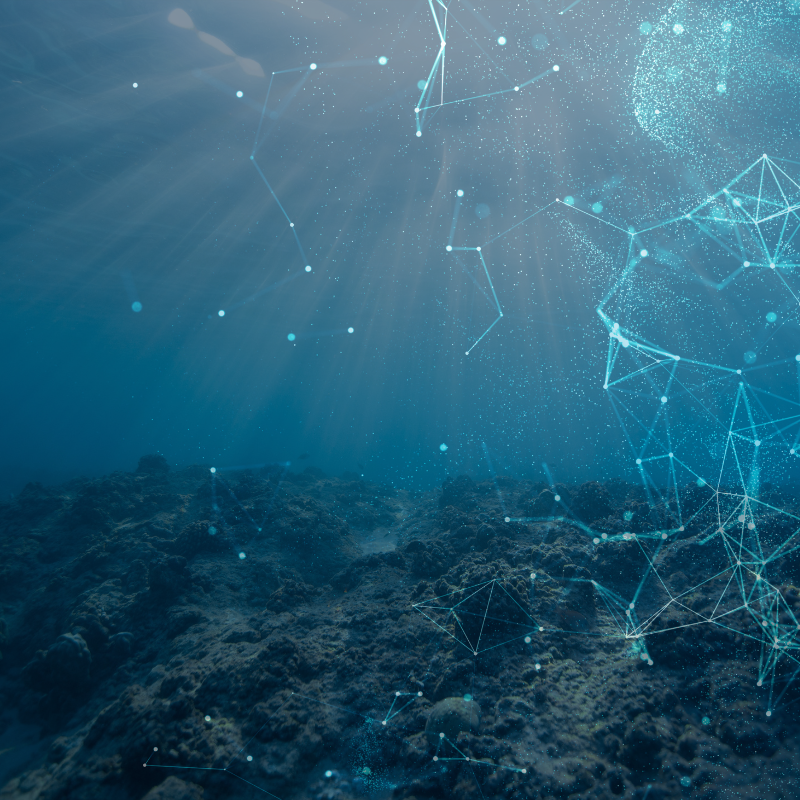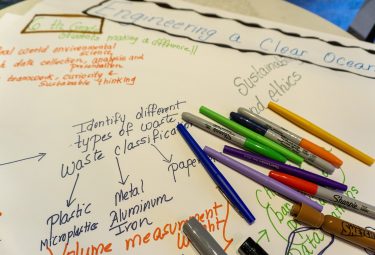Early bird rates are available for registration to the 2026 January ESIP Meeting. Register.
Easy Resources for Managing Marine Data

Data is about as cut and dry as the sea. Sure, datasets can be distilled into their salty and nutritional components, but much like ocean ecosystems, marine data is meant to flow and is best managed as an integrated whole.
That means successful data management starts before any information is even gathered. From picking file formats to planning data quality, the Marine Data Cluster and DOOS put together a list of quick dips and deep dives in an infographic organized around the data life cycle.
Check out “Easy Resources for Managing Your Ocean Data” on the ESIP figshare and tips on the DOOS website.
Marine Data Cluster
The Marine Data Cluster brings together an interdisciplinary team to advance and address challenges in marine data and computing. The Cluster meets on the second Thursday each month at 2 p.m. ET. Join their next call through the ESIP Community Calendar.
The team included Karen Stocks, Stace Beaulieu, Carolina Berys-Gonzalez, Mathew Biddle, Allison Mills, Sarah O'Connor, Leslie M. Smith, Michael Vardaro and Dawn J. Wright.
Marine Data Life Cycle:
- Learn
- (Laugh)
- Plan
- Collect
- Process
- Describe
- Assure
- Preserve
Through all stages, data discovery and reuse enable good data management. Likewise, the data life cycle itself is not always linear. Many steps may circle back or jump forward depending on the specific nuances of an ocean data project or dataset.
Plus, there are experts in data management. Look for expertise at your institution (hint, libraries are great and not just for books) or join a community of practice like ESIP’s Collaboration Areas.
Take a Quick Dip into Marine Data Management.
What are the top things data curators wish scientists with deep ocean data were aware of? Where can you start learning how to do a bit better with managing your data, so it is useful for addressing big science and policy questions about the deep sea and preserved for future use?
These questions were central in the creation of the ocean data infographic. Because data management is its own field, many oceanographers do not get a chance to learn effective data management or principles like FAIR (findable, accessible, interoperable, and reusable). Having data management plan (DMP) tools can relieve later stress during analysis. A DMP also helps ensure that a project’s data is not standalone and is more like a single drop within a larger body of water.
As data is collected and processed, there are additional ways to save effort: data formats, tips for spreadsheets, workflows, and metadata. In particular, considering metadata and processes earlier saves time in the long run. This is also true for quality assurance – not just a term for car commercials.
While it may coincide with the wrap-up of a research project, data preservation is not the end. By submitting quality data to reliable repositories, a dataset may begin in new projects, contribute to larger datasets or inspire novel analysis.
Dive Deeper into Oceanographic Data Resources.
There is always more to learn. And many people make careers supporting, managing and disseminating data. Their work spans government agencies, academic institutions, community organizations, nonprofits and industry. This interdisciplinary niche is one of the reasons ESIP celebrates 25 years in 2023.
DOOS and the Marine Data Cluster recognize that some oceanographers may want more comprehensive tools to expand their data management skills. Here are a few listed in the infographic as well as courses offered within the Earth science data community.
Marine Data Resources:
- Effective Data Management
- How to Create a Data Management Plan (DMP)
- More on Spreadsheets
- Big Picture: Quality Assurance
More Comprehensive Marine Data Programs:
- Software & Data Carpentries
- Ocean Best Practices System
- ESIP Data Management Clearinghouse
- Ocean Teacher Global Academy
This blog was written by Allison Mills with edits from Karen Stocks and Carolina Berys-Gonzalez. The infographic was developed by the ESIP Marine Data Cluster and Deep Ocean Observing Strategy (DOOS). The resources and graphic were presented at the AGU Fall Meeting 2022, 2023 January ESIP Meeting – Research Showcase.
ESIP stands for Earth Science Information Partners and is a community of partner organizations and volunteers. We work together to meet environmental data challenges and look for opportunities to expand, improve, and innovate across Earth science disciplines.
Learn more at esipfed.org/get-involved and sign up for the weekly ESIP Update for #EarthScienceData events, funding, webinars and ESIP announcements.



